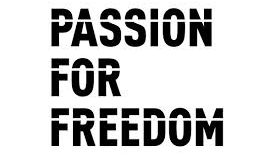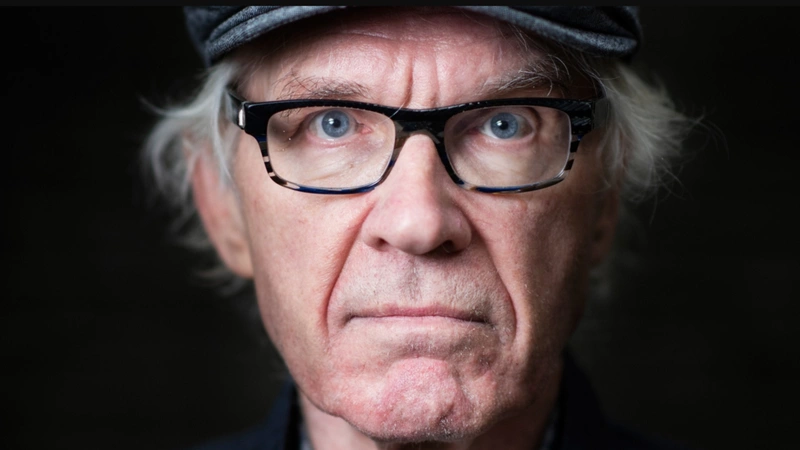Lars Vilks Memorial
Wolter meant to say that if you want to know who rules you, consider whom you cannot criticise. This sentence seems to be a good motto for many contemporary artists whose activities focus on criticising various environments and entities, as well as on unmasking the power relations existing in society. Such artists, although with some reservations, also include Lars Vilks.
Vilks’ artistic activity triggers the mechanisms of power that control society, which are exposed through censorship. However, just to provoke this mechanism is not Vilks’ goal. When he started building his most famous work – a monumental land-art sculpture on the sea coast of the Kullaberg reserve in Sweden in the 1980s, above all, he wanted to pursue his creative passion and artistic freedom. This goal was the driving force behind his actions, not the fight against local and state authorities. However, as the work progressed, the control mechanisms that Vilks involuntarily provoked with his actions also became visible. Lars Vilks took up the gauntlet thrown down by the authorities and was incredibly consistent in doing so. He gave a new meaning to his work by making resistance to political actions the material of his work. This is another feature that distinguishes him from those artists who violate power relations only superficially, not wanting to risk a clash and stopping halfway.
Vilks carried out his actions consistently, and the announcement of the independent state of Ladonia based on the created mega-sculpture was the culmination of the process of revealing and de facto neutralizing state power. Vilks very clearly demonstrated that state power itself is not a very important force that could control art today.
It is not secular, administrative power that is the main threat to artistic freedom today. So, what is it?
The answer lies within Vilks’ next artwork, which turned into an entire artistic project. In 2007, when Lars Vilks’ inconspicuous drawing “Prophet M. as a dog on a roundabout” was created, a new, dangerous enemy emerged. Although the work eventually has not been exhibited, despite being commissioned for it (the first show of the drawing took place at CSW Zamek Ujazdowski Warsaw at the “Political Art” exhibition in 2021), the artist was subjected to a fatwa and his life changed dramatically. He was pushed to the margins – galleries, universities (Vilks was also an art historian and academic lecturer) and other cultural institutions stayed away from the artist as if the fatwa were some new kind of leprosy.
So has Islam become the power that exercises real control and limits creative freedom today? This would be quite a radical conclusion, considering that Sweden, where Vilks lived, is not an Islamic state, but a secular state in which power is not subordinated to any religion. Moreover, the Swedish authorities, in the name of defending freedom, protected Vilks for many years, although this protection paradoxically became his prison. Trying to diagnose this problem, Vilks made several works critical of other religions – especially Christianity, which did not raise any mechanisms of power. Today, the Christian religion is not a real political force in European countries, especially in the West.
So what power relationship did Vilks discover? It seems that it is not so much about Islam itself, but the way of treating Islam, or rather the ideology defining the attitude of Western civilization towards its own culture and foreign cultures. This ideology is political correctness, according to which the West withdraws from defending its own traditional cultural values in favour of valuing other cultures (or internal and marginal trends, previously considered anti-cult), which it perceives as equally important and, in practice, privileged. It is this ideological mechanism that blocks the desire to defend freedom of speech and determines the lack of support for artists and people who criticise other cultures, religions or any phenomena considered persecuted by Western civilization. Allowing a situation in which a relatively small group of radical Islamists can intimidate and ultimately make the entire society defenceless, is a simple consequence of the spread of this ideology that disarms resistance. Significantly, Vilks’ work could be shown in Poland, where the ideology of political correctness is so weak that the aggressive actions of Islamic activists do not bring any political benefits and are rather socially rejected. In the West, theoretically, any criticism is allowed, but in practice it is impossible – it can result in ostracism and public death, which Lars Vilks experienced during his lifetime.
This precisely is the mechanism of power – contemporary ideological power – that Lars Vilks, one of the few contemporary artists, exposed and opposed through his artistic activity of the year. “I don’t agree with what you say, but I will give my life so that you have the right to say it” – this maxim attributed to Wolter, quite trivialized by frequent repetition, today takes on a new and sublime meaning, thanks to Vilks – whose mysterious death fulfils it in some way.
Author: Piotr Bernatowicz

